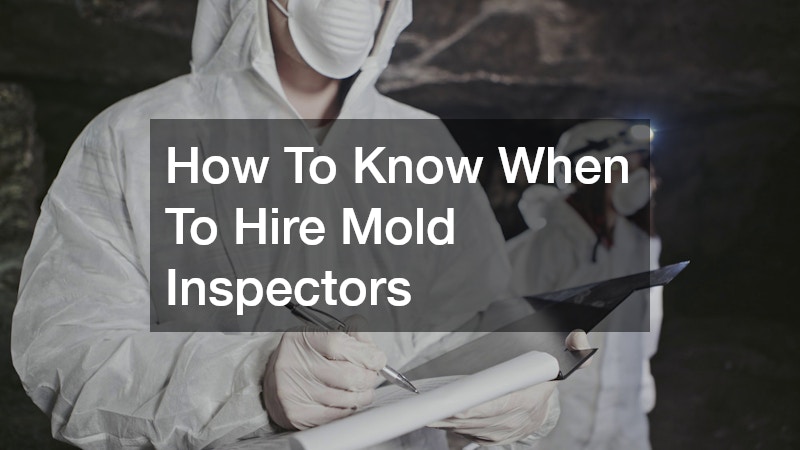
Understanding when it is necessary to hire mold inspectors can prevent health problems and property damage. This article will guide you through the key signs and situations that warrant professional mold inspection.
Many people experience persistent health issues like allergies or respiratory problems without understanding the root cause. Mold exposure is a common culprit that may lead to unexplained symptoms, warranting a professional inspection.
Video Source
Symptoms such as coughing, sneezing, and skin irritations can often be linked to mold presence, especially in indoor environments. It's crucial to take note if these symptoms persist irrespective of seasonal changes or other common allergens.
If multiple members of a household or building occupants report these symptoms simultaneously, it may indicate a shared environmental trigger. Promptly addressing potential mold sources can prevent further health implications and ensure a healthier living space.
Any visible mold growth in your home, whether on walls, ceilings, or furnishings, should not be ignored. Even small patches can suggest a more extensive hidden problem that requires expert assessment.
Visually inspecting your space for telltale spots of discoloration can reveal areas where mold thrives, often in moist or poorly ventilated zones. When mold is visible, it serves as an indicator for larger, possibly hidden issues that a professional can uncover.
Ignoring visible mold can lead to structural damage over time, as mold degrades the materials it inhabits. Engaging a professional inspector is the first step in an effective remediation plan, safeguarding both the value and safety of your property.
For most residential settings, it is advisable to conduct a mold inspection every few years to ensure early detection of potential issues. Regular inspections are an essential part of home maintenance, helping to avoid costly repairs later on.
In commercial properties, frequent evaluations might be necessary due to larger footprints and diverse types of occupancy. Consistent monitoring of mold can help businesses maintain a healthy work environment, leading to increased productivity and fewer employee absences.
Combining regular inspections with vigilant maintenance increases the likelihood of catching mold problems before they escalate. These proactive efforts are critical in extending the longevity of your property and enhancing indoor air quality.
Certain circumstances necessitate immediate mold inspections, such as after experiencing a leak or flood. Unaddressed water damage can rapidly lead to mold growth, especially in humid climates.
Other instances that should prompt an inspection include prior mold problems or recently completed renovations, where new materials might harbor mold spores. Situational inspections ensure any residual mold is identified and eradicated before it becomes more pervasive.
Seasonal changes, particularly those that result in increased humidity, can also warrant mold inspections. By responding quickly to these situational cues, property owners protect their investment and health.
A professional mold inspection involves several key steps, beginning with a thorough visual assessment of the property. Inspectors look for visible signs of mold as well as environmental factors conducive to mold growth, such as moisture and poor ventilation.
Beyond the visual inspection, air quality testing is performed to detect mold spores that aren’t visible to the naked eye. This comprehensive approach ensures that even hidden mold growth does not go unnoticed, providing a safer living environment.
The inspector may also employ moisture meters and thermal imaging to uncover hidden mold sources. These advanced techniques enhance the accuracy of the inspection, allowing for better-informed decisions regarding remediation strategies.
After an inspection, a detailed report outlines the findings, indicating both the severity and location of mold issues. The report typically includes recommendations for remediation, helping property owners understand their next steps.
Professionals might suggest remediation methods such as specialized cleaning or removal of contaminated materials, depending on the extent of the mold problem. Acting on these recommendations promptly is crucial to prevent the mold from spreading further and affecting more areas.
In addition to remediation advice, inspectors may offer maintenance tips to minimize future mold risks. Implementing these strategies can significantly reduce the recurrence of mold problems, ensuring a long-lasting resolution.
Summarizing the critical indicators that necessitate a mold inspection and emphasizing the importance of addressing mold issues promptly to maintain a safe living or working environment. Mold issues, if left unaddressed, can have significant health and financial repercussions, underscoring the need for timely professional intervention.
